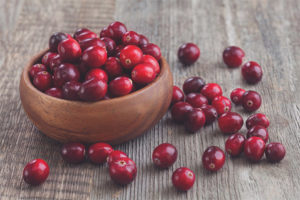The content of the article
Every diabetic knows that with the disease, his lifestyle and nutrition should radically change. The patient’s diet requires the most attention, as he is strictly forbidden to eat foods that increase blood sugar, that is, having a high glycemic index.
A lot of myths hang around marshmallows - delicious sweets, which are considered dietary throughout the world. But not everything that contains moderate calories is beneficial for the diabetic. Modern marshmallows include a lot of chemical components and sweeteners, so its GI significantly exceeds the tolerable 50-70 points for diabetes. At the same time, in a special department you can buy really healthy sweets or, as an option, cook them at home yourself from healthy ingredients.
How can marshmallow be useful for a diabetic?
A high-quality product is made from pectin, fructose and agar-agar, while it does not contain pure sugar and fats.
Pectin binds and removes toxins from the body, metabolites, toxins, radionuclides, metal salts, breakdown products and other harmful components. It also promotes better digestion and peristalsis.
In addition to these components, oriental sweetness contains various vitamins (group B, PP, A and C), proteins and minerals (iron, phosphorus, calcium, sodium, potassium, magnesium). All of them help strengthen the immune system, positively affect the endocrine system, and stimulate the thyroid gland. Due to the frequent use of diet marshmallows, you can reduce the risk of inflammatory and infectious diseases, as well as malignant processes. Also useful components improve muscle tone, nourish the skin.
Dietary fiber in the composition of marshmallows cleanse the body of toxins, promote comfortable digestion, and prevent constipation.
Is it possible to eat store marshmallows
Nutritionists and endocrinologists forbid diabetics to eat store marshmallows, as it contains:
- simple sugars, glucose;
- dyes (including artificial ones);
- flavor enhancers and chemical fillers;
- dyes;
- flavorings;
- preservatives;
- thickeners.
It is noted that store sweetness is addictive in humans, which leads to uncontrolled consumption and rapid weight gain. In a diabetic, the endocrine system does not cope well with the load, so even a slight stable influx of calories can cause obesity, and even more so when it comes to sweets with high GI.
Also, factory marshmallows contain simple carbohydrates and sugars, which, falling into the blood, are split into energy and provoke a sharp increase in plasma concentration. In some cases, overeating with marshmallows can cause an attack of hyperglycemia, which is accompanied by dizziness and fainting, profuse salivation, general weakness and irrepressible thirst.
Do not forget that the chemical components in the store product can cause allergies, which in a diabetic will proceed markedly.
What is diet marshmallow and how to cook it
Homemade marshmallows are usually prepared using sweeteners (stevia, fructose) and natural ingredients:
- natural egg whites (without yolks, as they contain cholesterol);
- agar (a natural substitute for gelatin, which is obtained from sprouts);
- fruit filler, for example, applesauce (the apple has a small GI - only 32 points).
Agar has the ability to lower the glycemic index of the final product.
As for sweeteners, substances such as sorbitol or xylitol up to 30 g in no way affect blood sugar. You can also use saccharin, aspartame, sucrodite or slastilin.
Despite the dietary properties, doctors do not recommend consuming more than 100 g of natural marshmallows for diabetes, since an increase in blood sugar can even cause fructose.
How to cook a healthy dish that matches the patient’s diet?
- Prepare fruit puree. Mostly used apple, pear or mango.
- Add sugar substitute to the resulting mass and mix.
- Beat egg whites in a blender. It is necessary to take in a proportion of 1 protein per 200 g of fruit puree. Add a pinch of citric acid to the mass as a natural preservative and acid stabilizer, mix.
- Prepare a viscous solution from agar-agar or gelatin and add to the fruit puree.
- Boil the mass until thickened over low heat.
- Add protein mass to chilled fruit puree and mix.
- Cover the baking sheet with baking paper and lay out the resulting mass.
- Put the pan in the refrigerator for a couple of hours.
- Dry the resulting marshmallows at room temperature until necessary.
The shelf life of such a sweet is about 5 days. It is not recommended to heat the sweets or store them in the freezer.
On average, about 2 dietary marshmallows are allowed to be consumed per day with normal water.
Marshmallow is a tasty and healthy treat for a diabetic only if it is prepared independently from natural ingredients and sugar substitutes. You can also indulge in grocery items, but rarely - no more than 2 pieces a week, and if you feel worse, completely abandon factory sweets.
Video: marshmallows for diabetes











Submit